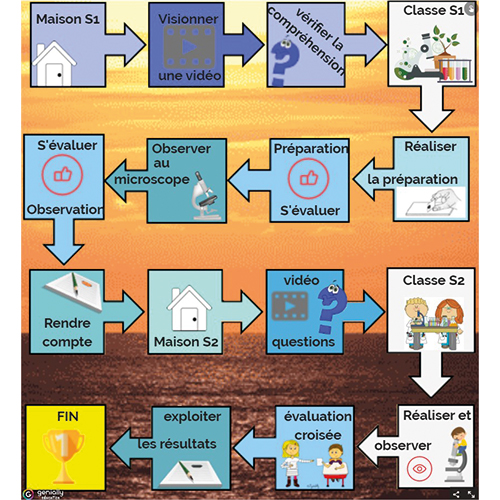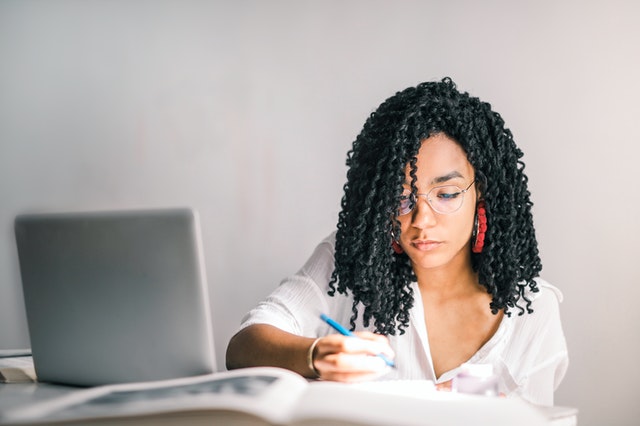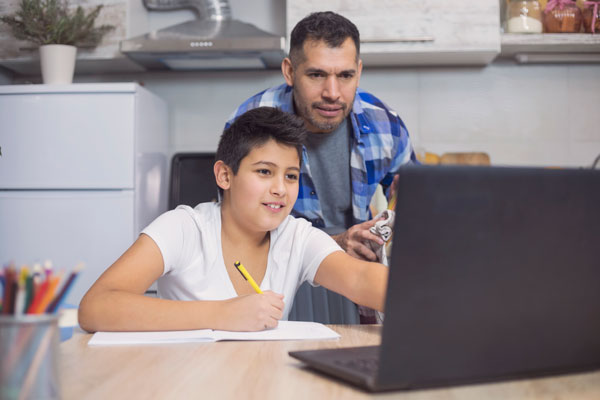How can you prepare students for handling a microscope in a flipped classroom?
[Testimony]
Christelle Jacquemin, Biology teacher for 21 years, the last 5 years in a rural junior school in Moselle, the Collège des deux Sarres in Lorquin. A great user of digital solutions in class, she easily picked up Skolengo EMS. Its user-friendliness and the many features have rapidly made it an essential tool for classroom practices and in particular those of flipped classes.
Why use flipped classes?
When did you decide to use flipped classes?
I discovered flipped classes about 10 years ago. When I arrived at my new junior school, I did not have a textbook for working with the students. I therefore had to cope for creating teaching aids. My classes were very full for a scientific discipline (e.g. this year, 27 students in year 7, not split-up/26 in year 5) if I want them to perform experiments. I am obliged to have them learn certain concepts at home. Finally, to differentiate the work given to the students, this practice seemed ideal.
In the beginning, I put course outlines on a personal website. The Skolengo EMS facilitates setting up this practice.

How can you set-up a flipped class with the EMS?
A concrete example of setting up a flipped class
In year 7, I have to work on the concept of the cell. The students have to do many experiments: preparing a microscope slide/ observing with a microscope. This is a sequence rich in new ideas as the year 7 students have never worked on this subject and have rarely seen a microscope.
I gave them therefore, what I call a “flipped pathway” built using Genial-ly that I put in the blog of the class space, reserved for Biology in year 7. The first step is watching a video at home, followed by a quiz that allows me to check that they have understood how to use a microscope. A quiz (produced with LaQuizinière) is then given to the students via the digital organizer.
Answers to the quiz allows me to form groups for the first observation in class.
The principle is the same through the sequence of flipped pathways: the theoretical knowledge is acquired in the form of a video at home, the practical aspects are done in class.
According to you, what are the benefits of flipped classes?
This practice allows time to be freed up in biology class for doing experiments. In addition, I immediately see (before the class) which students seem to be having difficulties and I can tailor the work that I give them to do BEFORE arriving in class.
The flipped class allows me also to see what points of the lesson have been mostly understood and what points remain to be reviewed in greater depth.
How does Skolengo Education Management Software help you in preparing your courses?
In addition to Skolengo EMS, I use other digital tools. The EMS allows me to provide students with interactive aids (via the blog) and quizzes (via the digital organizer). The messaging service is also used a lot for reminding students that they have not done the work that they had to do or to answer student questions after viewing the videos.
The digital organizer allows me to differentiate the work given to students: I can assign work individually and not necessarily to the whole class. I have the possibility of stressing certain concepts with students in difficulty or on the other hand, with students who need “more”.



